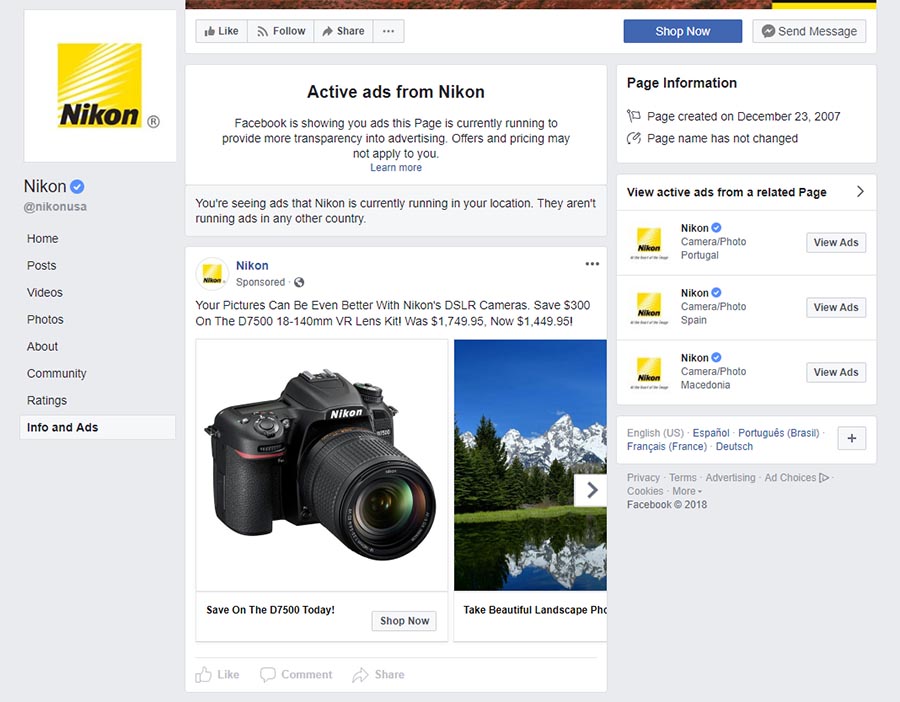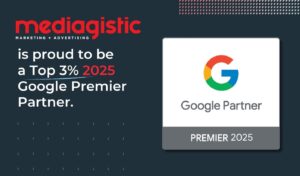
Last Week in Digital Marketing: Security, Transparency and Secrets Revealed
Google and Facebook have both made big steps in improving their transparency this past week. While Facebook is trying to recover from an onslaught of negative press, Google is simply trying to avoid a similar fate and stay on Americans’ collective good side. Read on to learn how this new information could be beneficial to your digital marketing strategy.
Google Discloses New Information About Its Algorithm
This week, Juniper Downs, a representative from Google, testified to the United States House Judiciary Committee and disclosed several facts about their algorithm. Downs started off by explaining that 15 percent of the searches Google sees are new to them — for example, when people were Googling “Thailand soccer team trapped in caves,” Google’s search engines had never seen this before. However, Google uses RankBrain and context clues to spit back out its best guess at what you’re looking for. Over time, Google accumulates more and more familiar phrases.
Downs also talked about ranking. She stated that sometimes Google doesn’t rank a website at all because of legal issues or privacy issues — websites that violate their webmaster guidelines are removed from search results. Another important piece of information Downs shared is that Google updates its algorithm about seven times each day.
Takeaway: It’s difficult (if not outright impossible) to keep up with every single change Google makes, so digital marketers and businesses would be well-advised to focus on significant updates that notably impact SEO.
Google Steps Up Its Security
Google is also taking steps to accurately label sites that aren’t secure. Instead of labeling all sites as “secure” by default, Google is now requiring sites to use “https” instead of “http” to prove their credibility (note: the extra “s” is for “secure”). Making this transition is necessary to give credibility to your website and ensure security for users.
Takeaway: If your website is still using an “http” protocol, then it’s time to act now and start the transition.
Facebook Responds to Criticism With New Ad Transparency Features
Facebook has been under intense observation since the 2016 presidential election, so this week it took a step toward becoming more transparent with its ads by adding a couple new features that every Facebook user can take advantage of.
By clicking on a business’s Facebook page and then on the “Info and Ads” section, you can see when and how the business edited its page. For example, we can go into Nikon’s Facebook page and see that the company hasn’t changed its name since the page was created in 2007. We can also see that Nikon is running an ad for its D7500 VR lens kit.

How does this help businesses? For one, advertisers can look at the different content and styles of ads their competitors are running, and potentially copy their marketing tactics — or create a completely different marketing campaign to align with their own branding and sales goals. Customers can also benefit from this feature by understanding which posts are ads and which are organic posts, a component many users had been pushing for.
Facebook is also banning ads that contain political content. On the surface, this is great, but they still have a long way to go: several businesses are complaining that Facebook’s system is prohibiting certain ads from running simply because they contain links to news articles about current events.
Takeaway: Facebook is following in Twitter’s footsteps with its new Ads Transparency Center and making strides to become more understandable for its users.
Small Businesses Take Advantage of Facebook Marketplace
Another fairly new feature digital marketers can profit from is the ability to advertise in Facebook Marketplace. Compared to eBay or Craigslist, Facebook Marketplace has a huge following — about 800 million monthly users. By running your ads on Marketplace rather than just on Facebook, you can reach a more specific audience that has the intent on making a purchase. You can also see how these Marketplace ads compare to your other ads over time.
Takeaway: Smaller businesses can utilize Facebook Marketplace by running ads now, while they’re still inexpensive, since Facebook Marketplace ads are still in the younger stages.
 Liz MacLean is an Inbound Marketing Specialist with experience managing social media and creating content for small businesses and nonprofit organizations. She is an award-winning writer who has produced photographs and articles about cooking, clothing, nature, and fitness for local magazines and newspapers.
Liz MacLean is an Inbound Marketing Specialist with experience managing social media and creating content for small businesses and nonprofit organizations. She is an award-winning writer who has produced photographs and articles about cooking, clothing, nature, and fitness for local magazines and newspapers.
Image via Pixabay.
You May Also Like

Mediagistic Achieves Top 3% Google Premier Partner Status for 2025
March 6, 2025We are thrilled to announce that Mediagistic has been named a 2025 Google Premier Partner! This prestigious recognition places us among the… Continue Reading Mediagistic Achieves Top 3% Google Premier Partner Status for 2025…

OPE Marketing: 6 Major Downsides of a Disconnected Strategy
February 5, 2025As an outdoor power equipment (OPE) dealer, your focus is on selling top-quality lawn and landscape equipment—not managing a complicated web of… Continue Reading OPE Marketing: 6 Major Downsides of a Disconnected Strategy…

Mediagistic Interview with ACHR News: Partnering with the Right Marketing Firm
February 4, 2025Mediagistic’s Director of Corporate Marketing, Eddie Childs, was recently interviewed by ACHR News on the importance of selecting the right marketing firm… Continue Reading Mediagistic Interview with ACHR News: Partnering with the Right Marketing Firm…